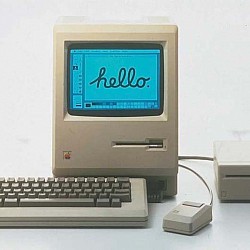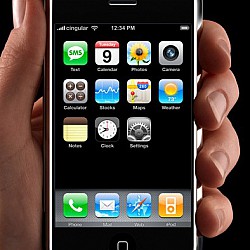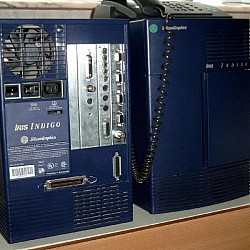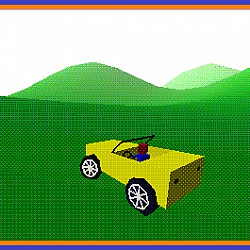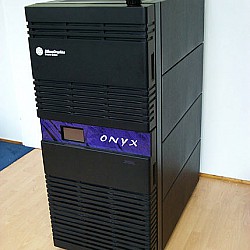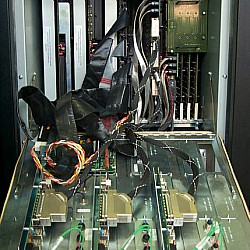Computergrafik
Historie
← Teilgebiete | ● | Literatur →
Grafische Benutzeroberfl├Ąche
- erfunden am PARC 1975 (Palo Alto Research Center)
- erstmals im Apple MacIntosh und Comodore Amiga
- heutzutage ├╝berall zu finden, selbst auf dem Mobiltelefon
Displays
- Vektordisplay
- 1963: Modifiziertes Oszilloskop
- 1968: Gr├╝ndung von Evans&Sutherland
- 1974: Picture System von Evans&Sutherland
- Rasterdisplay
- 1975: Frame Buffer von Evans&Sutherland
- 1980s: billige PCs mit BitMaps (s/w)
- 1990s: LCDs → Laptops
- 2000s: Beamer, Digitalkino
3D Hardware:
- 1984: Erste Grafikworkstation von Silicon Graphics (SGI)
- 1997: 3dfx Voodoo, erste billige 3D Grafikkarte, ca. 500DM
- 2000: NVIDIA TNT
- 2001: NVIDIA GeForce
- 2002: ATI Radeon
- 2007: NVidia Cuda
Grafik Softwarestandards:
- 1982: GKS (Graphics Kernel System)
- 1984: MIT X-Windows System
- 1984: Silicon Graphics IRIS/GL
- 1988: PHIGS
- 1992: OpenGL
- 1995: DirectX
3D Algorithmen:
- Visibilit├Ąt
- Roberts 1963: hidden-line algorithms
- Watkins 1970: hidden-surface
- Sutherland 1974: visibility sorting
- Catmull 1974: Z-Buffer hidden-surface algorithm
- Lokale Beleuchtung
- Gouraud 1971: Diffuse Beleuchtung
- Phong 1974: Spekulare Beleuchtung
- Blinn 1974: Texturen
- Crow 1977: Anti-Aliasing
- Globale Beleuchtung
- Whitted 1980: Ray Tracing
- Goral, Torrance et. al. 1984: Radiosity
- Kajiya 1986: The Rendering Equation
A history of CG told by the Utah Teapot:
← Teilgebiete | ● | Literatur →
